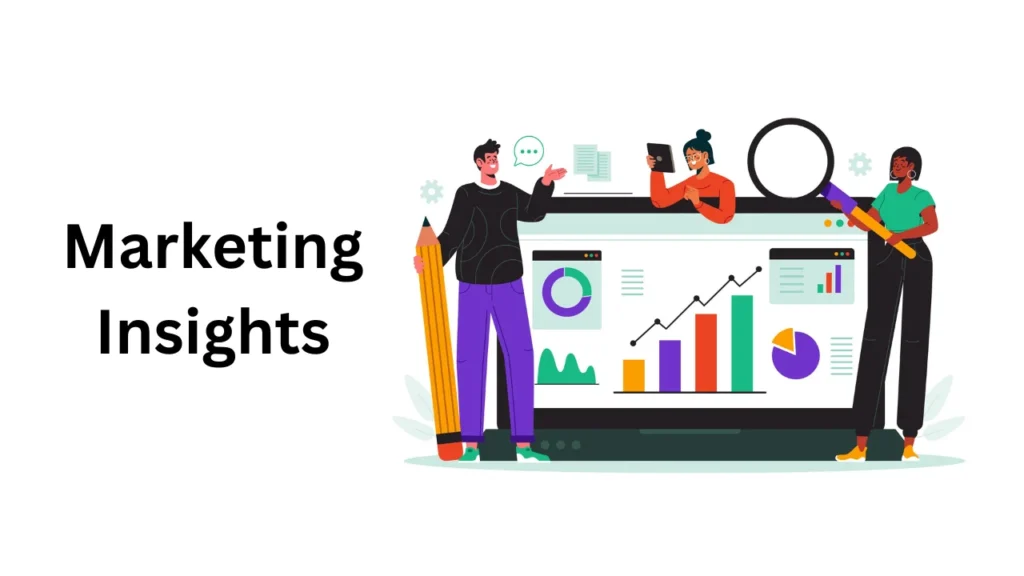In today’s hyper-competitive digital marketplace, data alone isn’t enough. Marketing teams have more dashboards than ever, yet many still struggle to answer a simple question: why did performance change? That’s where marketing insights come in.
A marketing insight transforms raw data into clear understanding. It tells you what happened, why it happened, and how to act next. Whether you’re optimizing ad spend, refining a content campaign, or improving customer experience, insights are the bridge between analytics and action.
This guide explains what marketing insights are, why they matter, how to collect and analyze them, and how top brands like Nestlé, Lego, Spotify, and Patek Philippe use them to dominate their markets in 2025.
Marketing Insights: Definition, Importance & Real Examples for 2025
What Are Marketing Insights?
A marketing insight is actionable understanding derived from data, research, and observation that reveals something meaningful about your customers, market, or performance.
-
Data are raw facts – page views, conversions, clicks.
-
Information is organized data – for example, traffic increased 25 % last quarter.
-
Insight explains why traffic rose – perhaps new content resonated with a younger audience.
In short:
Data → Information → Insight → Action.
Unlike plain analytics, insights connect numbers to motivation. They merge business intelligence, customer behavior, and creative thinking so marketers can make confident, evidence-based decisions.
Common insight types include business insights (strategic opportunities), consumer insights (behavioral patterns), and brand insights (perceptions that drive loyalty).
Types of Marketing Insights
1. Quantitative Insights
Derived from measurable data—click-through rates (CTR), conversion rates, or ROI.
Tools such as Google Analytics, Hotjar, or Search Console help reveal what users do and where friction occurs.
2. Qualitative Insights
Collected through surveys, interviews, or focus groups, qualitative insights explain why people behave as they do.
Platforms like Qualtrics, Typeform, and social media polls turn open feedback into actionable themes.
3. Consumer & Brand Insights
These explore perception, emotion, and identity—why customers choose one brand over another.
Understanding brand sentiment through listening tools like Sprout Social or Brandwatch allows you to adapt messaging to real audience feelings.
Why Marketing Insights Matter for Businesses
Modern companies depend on insights to stay agile and customer-centric. Key benefits include:
-
Smarter decisions: Replace hunches with data-backed direction.
-
Personalization: Tailor content and offers to micro-segments.
-
Forecasting: Anticipate demand shifts or emerging trends.
-
ROI growth: Identify which channels truly convert.
-
Cross-team alignment: Unify marketing, sales, and product around shared evidence.
Statistics back this up:
-
81 % of consumers must trust a brand before purchasing.
-
86 % are willing to pay more for a better experience.
Both figures highlight how understanding sentiment and expectations directly boosts profitability.
How to Gather and Analyze Marketing Insights
Follow this five-step framework to move from scattered data to strategic clarity:
| Step | Description | Recommended Tools |
|---|---|---|
| 1. Collect Data | Aggregate quantitative and qualitative sources: analytics, surveys, CRM, social listening. | Google Analytics, Hotjar, SparkToro |
| 2. Identify Patterns | Spot trends, anomalies, and correlations within metrics. | Tableau, Power BI |
| 3. Interpret Context | Connect data to audience motives using sentiment or text analysis. | NLP models, AI dashboards |
| 4. Apply to Strategy | Adjust campaigns, messaging, or UX accordingly. | A/B testing tools, CRM automation |
| 5. Measure & Iterate | Track results and refine continuously. | Attribution reports, dashboards |
This loop—collect, interpret, act, refine—turns analytics into competitive advantage.
From Data to Insight — The Transformation Process
Every organization gathers data, but few extract meaning.
Here’s how to elevate analytics into insight:
-
Integration: Combine data silos—ad spend, website traffic, and customer feedback—into one business intelligence platform.
-
Contextualization: Analyze patterns relative to time, region, or demographic.
-
Enrichment: Add qualitative data like reviews or interviews.
-
Interpretation: Use AI-driven analytics and machine learning to reveal drivers behind outcomes.
-
Action: Translate findings into campaigns or product changes.
The result is a data-driven marketing insight that’s timely, relevant, and actionable.
Examples of Marketing Insights in Action
Nestlé — Empathy as an Insight
Nestlé discovered that 64 % of Christmas cooks were women and 25 % ate cold meals after serving others.
Insight: Home cooks feel under-appreciated.
Action: A heartfelt ad honoring their effort.
Result: Emotional connection and viral engagement.
Lego — Design Thinking Rescue
In the 2000s Lego faced losses after straying from its essence. Research revealed customers wanted classic creativity, not new complex pieces.
Insight: Fans valued simplicity and imagination.
Action: Back-to-roots redesign through design thinking.
Result: Global brand revival.
Spotify — Turning Data into Delight
By analyzing user playlists, Spotify created Spotify Wrapped, a personalized summary shareable on social media.
Insight: People love celebrating personal taste publicly.
Action: Automated, user-generated marketing.
Result: Massive organic reach and loyalty.
Patek Philippe — Cultural Reinvention
Research on modern fatherhood showed changing male roles.
Insight: Luxury can represent emotional heritage, not status.
Action: Reframed “Generations” campaign around modern dads.
Result: Renewed relevance among younger buyers.
| Brand | Core Insight | Action Taken | Outcome |
|---|---|---|---|
| Nestlé | Cooking empathy | Tribute campaign | Viral engagement |
| Lego | Simplicity valued | Product revamp | Brand recovery |
| Spotify | Personal identity | Personalized reports | Free promotion |
| Patek Philippe | Modern fatherhood | Rebranding | Cultural renewal |
Tools for Generating Marketing Insights (2025 Edition)
| Tool | Category | Primary Use |
|---|---|---|
| Google Analytics 4 | Quantitative | Website behavior & conversion tracking |
| Hotjar | Behavioral | Heatmaps & session recordings |
| Qualtrics StatsIQ | Qualitative | Surveys & text analysis |
| SparkToro | Audience Intelligence | Psychographic research |
| Tableau / Power BI | Visualization | Data storytelling |
| Brandwatch / Sprout Social | Sentiment Analysis | Brand perception tracking |
Add AI integrations to these platforms for predictive analytics, real-time alerts, and automated insight generation.
Common Mistakes Marketers Make with Insights
Avoid these pitfalls to keep analysis credible:
-
Treating raw data as insight.
-
Ignoring qualitative or emotional factors.
-
Confusing correlation with causation
(remember the “ice cream sales vs homicide” joke—summer heat drives both). -
Using vanity metrics instead of KPIs.
-
Failing to tie insights to measurable business goals.
-
Not sharing insights across departments, causing siloed decisions.
Future of Marketing Insights — AI, Predictive Analytics & Ethics
By 2025, insight generation is evolving rapidly:
-
Predictive Analytics: AI models forecast campaign performance and buyer intent.
-
Real-Time Insights: Dashboards deliver instant alerts on engagement shifts.
-
Voice of Customer (VOC): Sentiment AI tools analyze tone and emotion.
-
First-Party Data: With third-party cookies fading, companies mine owned data responsibly.
-
Ethical AI: Marketers must ensure transparency, privacy, and bias-free algorithms.
FAQs About Marketing Insights
Q1. What is a marketing insight example?
A marketing insight is actionable learning from data—like Spotify realizing listeners enjoy sharing their playlists, which led to the Wrapped campaign.
Q2. How do marketers collect insights?
Through analytics platforms, surveys, focus groups, and social listening that combine quantitative and qualitative data.
Q3. What’s the difference between market and marketing insights?
Market insights study external conditions (economy, competition). Marketing insights focus on campaign performance and audience behavior.
Q4. How can small businesses use marketing insights?
Start with free tools—Google Analytics and social media analytics—to understand customer interests, then adjust messaging or product timing accordingly.
Q5. Which tools are best for generating insights?
Qualtrics for surveys, Hotjar for behavior, SparkToro for audience data, and Tableau for visualization.
Conclusion — Turning Insight into Impact
Data without context is noise. Marketing insights give that data meaning, transforming numbers into strategy and campaigns into stories that resonate.
In 2025, successful marketers will combine analytics, AI, and creativity to uncover truths about their audience faster than ever before. The brands that listen, learn, and act on insights will not only win attention—but sustain loyalty.



